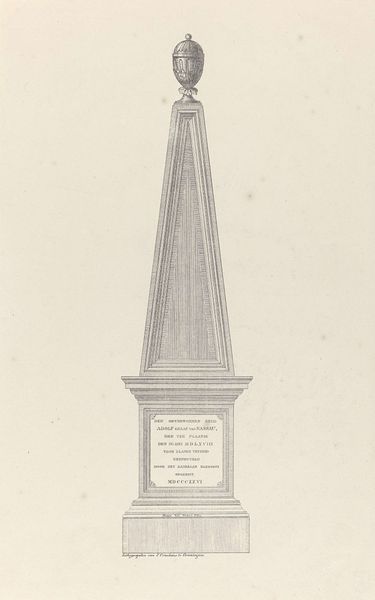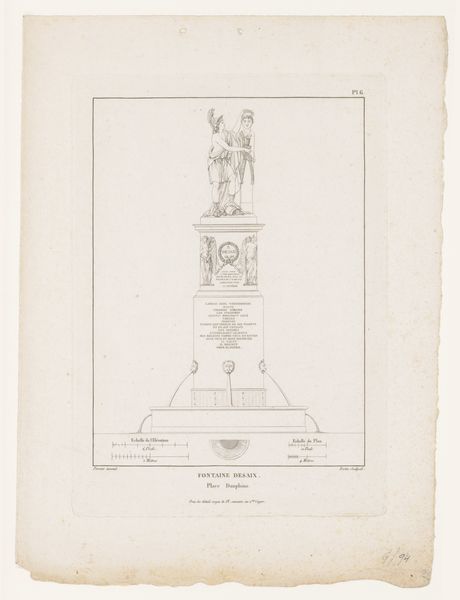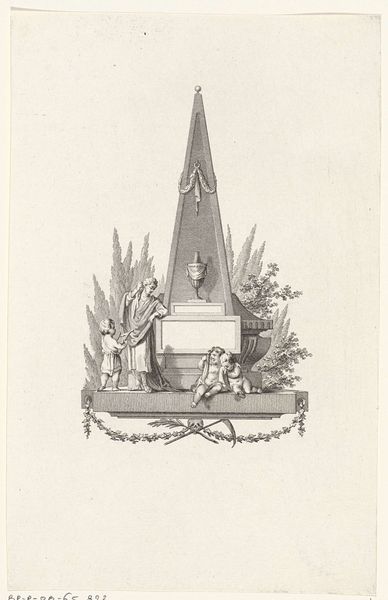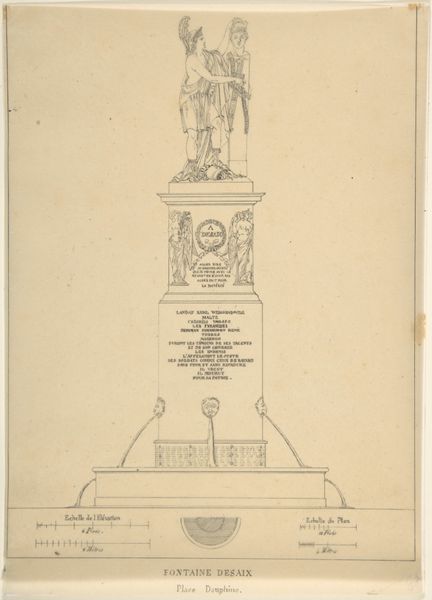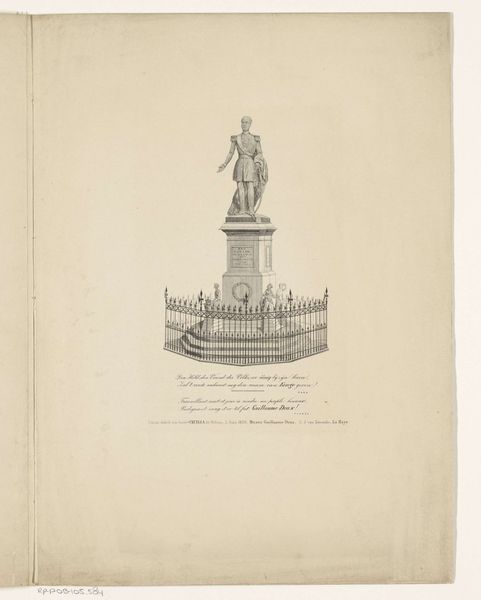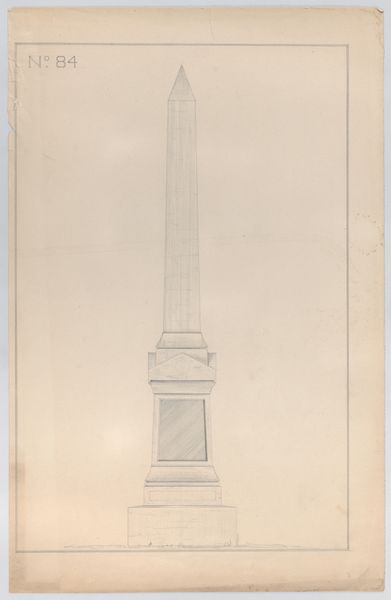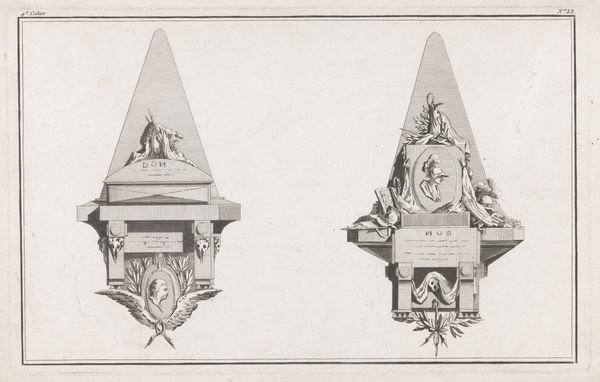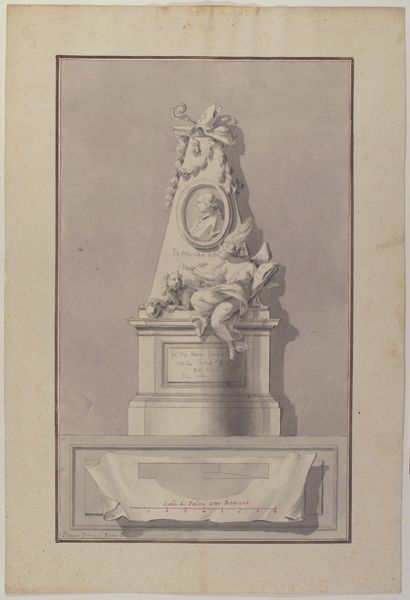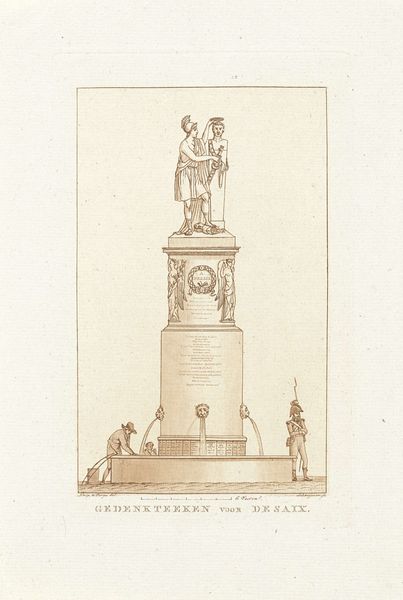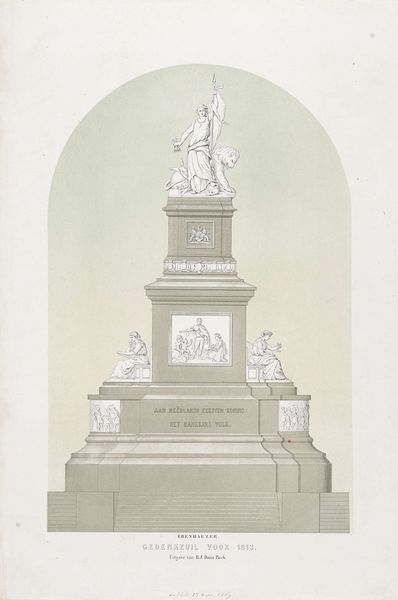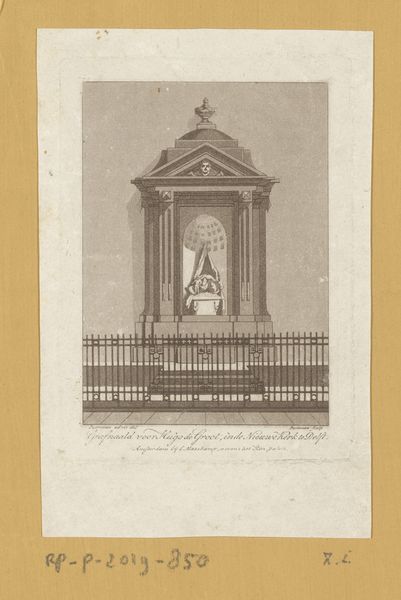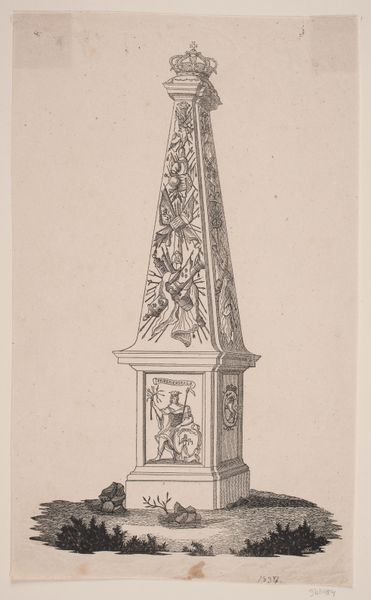
drawing, print, ink, pencil, architecture
#
drawing
#
neoclacissism
# print
#
landscape
#
ink
#
pencil
#
watercolour illustration
#
architecture
Dimensions: height 488 mm, width 355 mm, height 602 mm, width 450 mm
Copyright: Rijks Museum: Open Domain
Editor: Here we have "Monument in honor of Middelburg's new harbor, 1817", an ink, pencil, and watercolor drawing, probably a study, by an anonymous artist. The starkness of the monument’s design, rendered in such pale tones, gives it a very formal, almost austere, feel. What strikes you about it? Curator: The monument, designed in the Neoclassical style, offers a fascinating glimpse into the power dynamics of the time. Given its purpose, how do you think the construction of a new harbor and the erection of such a monument reflect the prevailing social and political ideology of early 19th-century Netherlands? Editor: I see what you mean. The clean lines and the almost severe lack of ornamentation, along with its sheer size, do project power. Was Neoclassicism typically used to convey that kind of message? Curator: Absolutely. Neoclassicism, with its references to ancient Greece and Rome, was often employed to evoke notions of civic virtue, order, and imperial authority. The monument isn't merely celebrating a new harbor; it's also subtly reinforcing the legitimacy and might of the ruling monarchy, especially after the Napoleonic era. How might this connect with the monument's dedication to the King? Editor: So, the monument becomes a statement about the King’s success in rebuilding the Netherlands after a period of conflict, connecting him to the glory of past empires? Curator: Precisely. Consider, too, the location of the monument at the harbor itself. The harbor, a vital artery of commerce and naval power, would further amplify this message, integrating the idea of royal authority with economic and military strength. Don't you think there is something almost propagandistic about it? Editor: That’s an interesting way of putting it. I had not really thought of it that way. This was much more than just a pretty picture to hang on the wall. Curator: Exactly. This drawing provides us with insights into how art can become embedded in the political and social landscape. I'm glad we explored this together.
Comments
No comments
Be the first to comment and join the conversation on the ultimate creative platform.
